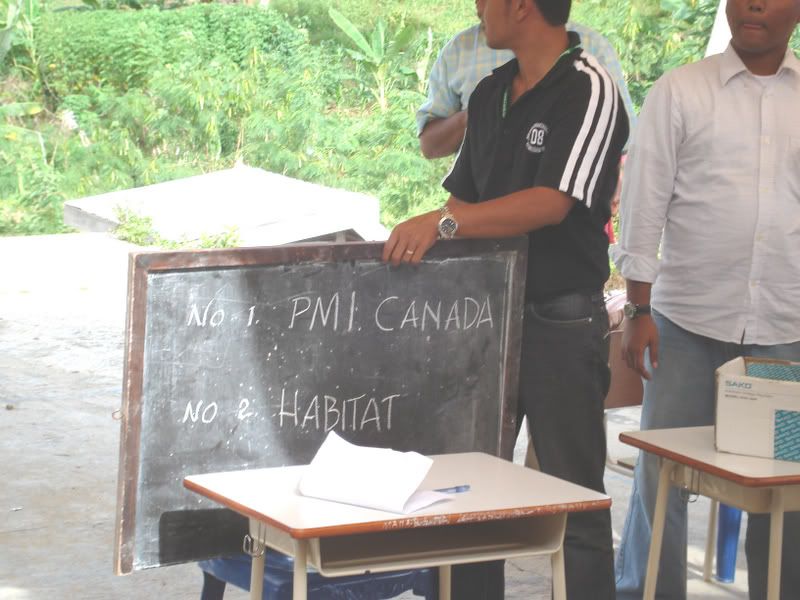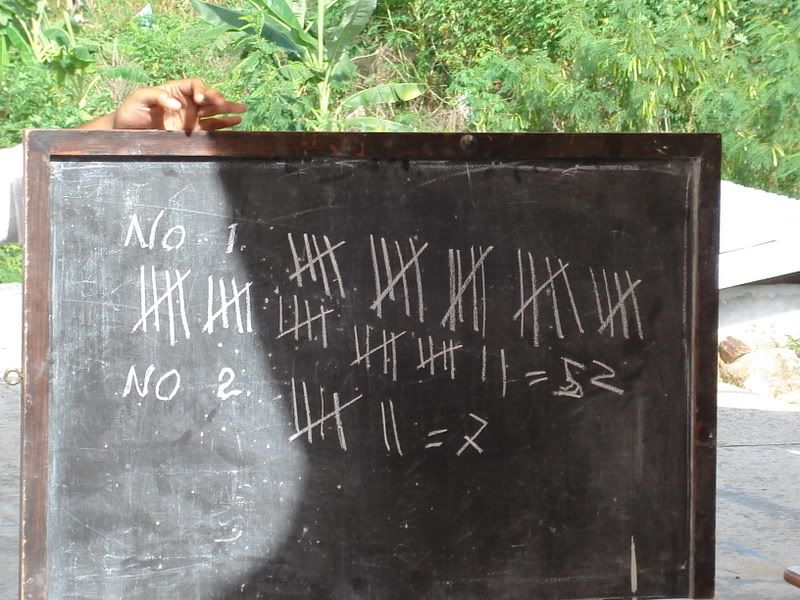Aceh reconstruction due to enormous of the house need is really a big business for contractors. More than 100,000 houses to be built, and should be as soon as possible. The tsunami victim became impatient since they have already in tents for almost 2 years. The donors were irritated due to the slow progress of reconstruction. They were chasing their NGOs whom receive their funding to fulfill what the NGOs had been promised. All of these were a perfect chemistry to drive a rush and messy construction job. In the next paragraph I will tell you how bad the situation was.
Bigger part or almost of all NGO who work in the reconstruction work are a relief NGO. Their experience is in mobilizing food, medicine and paramedic and also water-sanitation work and temporary shelter. But building a permanent house is a different story. Then at the end, the work of building a permanent house in a massive scale become out of context. This job becomes irrelevant since there are two things which mostly these NGO not possess. First, if they have this kind of experiences they should have all policies, procedures and the project management systems. All of these systems should be embedded in their org-ware and enable them to move fast to respond all the needs on the ground. Second, they don’t have human resource which capable enough to handle the job. Come to Aceh merely because of humanity is not enough. Reconstruction people should have project management skills if they want to succeed.From the contractors’ side this reconstruction job is a fiesta and heavy meal. No wonder they were flooded BRR with requests for prequalification. In mid of March 2006, there were 3,088 companies who took the prequalification document. They were 2,885 contractors and 203 consultants. It was unbelievable, if we compare to the number of same kind of company in Jakarta with a lot of continuously construction job. A notary whom we hire for our legal works, mentioned that a week before the submission of the company profile, she received abundant request for company legal document. This was miserable. These new born companies are intended for the sake to win a contract. They don’t have the past record which shows they have the capacity to work. And their capability to supply the working capital is a big question mark. It was a common tale that if they can win the contract they will subcontract to other company so create the 2 tier or even worse. At that time many NGO became a sitting duck in front of the nasty contractor.
Someone asked me, which one is better using contractor for the construction or direct implementation using skilled labours? Both are fine. This is my recommendation; we have to use
 contractor and direct implementation using the skilled labours at the same time. Contractor and the skilled labours can be like Dr Jeckyl and Mr. Hyde. Sometimes they are good and sometimes they are corrupt. They can be nice and the other time can be ill-behaved. Let say, your contractor done something nasty, you can switch them off and turn the job to skilled labours, and vice versa. The project management discipline can do that. You have to have a strong system and quite some experience to make this kind of move. If you can’t make an immediate corrective action supported with system and enough resource, you can be fooled by the contractors or your skilled labours. I have shared my best practices on managing skilled labours (click here) and managing contractors (click here). But merely depend on using just skilled labours or only using contractors is not enough. We have to combine it. This methodology can increase our productivity, reduce or overhead and already proven in my work on completion of the 4,600 permanent houses in Aceh reconstruction.
contractor and direct implementation using the skilled labours at the same time. Contractor and the skilled labours can be like Dr Jeckyl and Mr. Hyde. Sometimes they are good and sometimes they are corrupt. They can be nice and the other time can be ill-behaved. Let say, your contractor done something nasty, you can switch them off and turn the job to skilled labours, and vice versa. The project management discipline can do that. You have to have a strong system and quite some experience to make this kind of move. If you can’t make an immediate corrective action supported with system and enough resource, you can be fooled by the contractors or your skilled labours. I have shared my best practices on managing skilled labours (click here) and managing contractors (click here). But merely depend on using just skilled labours or only using contractors is not enough. We have to combine it. This methodology can increase our productivity, reduce or overhead and already proven in my work on completion of the 4,600 permanent houses in Aceh reconstruction.Arwin Soelaksono - Disaster Response & reConstruction









